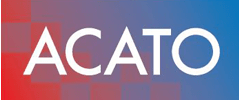Understand ISO 9001 Certification Cost for Small Businesses

How Small Businesses Can Afford ISO 9001 Certification: Affordable Strategies and Cost Insights
Securing ISO 9001 certification often seems out of reach for resource-constrained small businesses, yet research shows over 60% of SMEs report cost as the primary barrier. This guide reveals how to manage the ISO 9001 certification cost for small businesses through five key themes: understanding cost factors, effective cost-reduction tactics, funding opportunities, investment returns, and realistic timelines. Readers will gain actionable insights, practical examples, and comparative tables to make certification attainable without compromising quality.
What Are the Key Cost Factors of ISO 9001 Certification for Small Businesses?
ISO 9001 certification cost comprises external fees, internal effort, and training expenses. These factors determine total investment, ensuring budget accuracy and avoiding hidden charges. For example, a small manufacturer may allocate 40% of its budget to consultant guidance and 30% to audit fees, leaving 30% for staff training.
Which Expenses Make Up the ISO 9001 Certification Cost?
The primary cost components of ISO 9001 certification include:
- Consultancy fees for gap analysis and system design.
- Certification body fees covering document review and audits.
- Employee training on quality management principles.
- Documentation and resource development.
Consultancy fees often represent the largest share, while training ensures long-term compliance and reduces repeat audit expenses.
How Do Business Size and Industry Influence Certification Costs?
Smaller teams require more external support, and complex industries (e.g., manufacturing versus services) demand detailed process validation. A two-person consultancy might spend 20% less than a 20-person workshop, while technical sectors face higher audit scrutiny. Tailoring scope to core processes minimizes unnecessary fees.
What Role Do Internal Resources and Training Play in Budgeting?
Allocating staff time to internal audits and documentation lowers external consultant reliance, reducing costs by up to 25%. Training in-house champions accelerates system adoption and prevents scope creep. Investing in a single quality manager can replace repetitive consultant tasks, freeing budget for certification body fees.
How Can Small Businesses Reduce ISO 9001 Certification Costs Effectively?

Cost-reduction strategies bridge budget constraints without sacrificing system integrity. Focusing on lean implementation and digital tools can slash overhead, as demonstrated by startups that cut certification expenses by a third through structured self-implementation and online platforms.
What Are the Benefits and Challenges of Self-Implementing ISO 9001?
Self-implementation empowers SMEs to control expenses and internalize processes, but it demands time and expertise.
Benefits:
- Eliminates consultancy fees.
- Builds staff ownership.
- Adapts QMS to unique workflows.
Challenges:
- Requires deep standard knowledge.
- Risk of non-compliance without expert review.
- Extended implementation timeline.
Balancing these factors helps companies decide when external validation is essential.
How to Choose an Affordable ISO 9001 Consultant for SMEs?
Engaging a consultant with remote audit capabilities reduces travel expenses while ensuring expert guidance. Consider these tips:
- Compare package rates rather than hourly fees.
- Verify experience in your industry sector.
- Favor modular services that target specific audit stages.
Selecting a consultant aligned with your scope prevents over-engineering and keeps fees predictable.
How Can Digital QMS Tools Lower Certification Expenses?
Cloud-based Quality Management Systems centralize documentation, automate workflows, and enable real-time compliance monitoring. Digital QMS → reduces → manual errors and audit preparation time, lowering external audit fees.
The Impact of Digital Tools on Quality Management Systems - in English
Research indicates that the implementation of digital Quality Management Systems (QMS) can significantly reduce costs associated with audit preparation and overall operational expenses. Studies show that cloud-based QMS solutions can streamline documentation and automate workflows, leading to substantial savings in time and resources.
This research supports the article’s claims about the cost-saving benefits of digital QMS tools, specifically highlighting their impact on audit preparation and overall efficiency.
| Tool | Core Feature | Cost Impact |
|---|---|---|
| Cloud QMS Suite | Automated document control | 30% reduction in audit preparation |
| Template Library | Prebuilt procedures | 20% savings on consultancy hours |
| Audit Tracker | Workflow dashboards | 25% fewer external audit iterations |
Using digital QMS platforms streamlines processes and reallocates budget toward certification approval.
What Funding and Grants Are Available to Support ISO 9001 Certification for Small Businesses?

External funding can offset certification expenses and accelerate return on investment. Grants → fund → ISO 9001 certification, enabling SMEs to allocate internal resources to core operations instead of upfront fees.
Which Government Grants and Subsidies Can SMEs Access?
Many regional business agencies offer grants covering up to 50% of certification costs, including:
- Small Business Innovation Grants (US)
- SME Growth Vouchers (UK)
- Digitalisation Grants (EU)
Accessing these programs requires preparing a clear quality improvement plan and budget breakdown.
Are There Industry-Specific Financial Support Programs for ISO 9001?
Certain sectors, such as food processing and medical devices, provide targeted subsidies to enhance quality standards. For instance, a local food association may cover training costs to comply with safety regulations. Leveraging these opportunities reduces net expenditure and encourages best practices.
Why Is ISO 9001 Certification a Worthwhile Investment for Small Businesses?
ISO 9001 certification delivers measurable returns through process optimization and market differentiation. Certification → provides → competitive advantage by signaling reliability to prospective clients, fostering new contracts and premium pricing.
What Tangible Benefits Does ISO 9001 Bring to SMEs?
Key measurable gains include:
- 15–30% reduction in product defects.
- 20% improvement in on-time delivery rates.
- 10% savings in operational costs through process efficiency.
Benefits of ISO 9001 Certification for Small and Medium Enterprises - in English
Research demonstrates that ISO 9001 certification can lead to tangible improvements for SMEs, including reductions in product defects, enhanced on-time delivery rates, and overall operational cost savings. These improvements often translate into increased customer satisfaction and improved market competitiveness.
This citation supports the article’s discussion of the benefits of ISO 9001 certification, providing evidence for the positive impacts on product quality, delivery, and operational costs.
How Does ISO 9001 Improve Reputation and Customer Trust?
Adopting ISO 9001 quality management standards demonstrates a commitment to consistency and risk mitigation. This credibility → enhances → customer confidence, leading to larger contracts and stronger supplier relationships.
What Are Real-World Examples of Small Businesses Succeeding with ISO 9001?
A regional bakery increased wholesale orders by 40% after certification, and a local IT firm gained approval for government contracts previously out of reach.
These case studies confirm that affordable certification strategies can unlock new revenue streams.
How Long Does It Take and What Resources Are Needed to Achieve ISO 9001 Certification?
Typical ISO 9001 certification unfolds over defined phases requiring specific roles and deliverables. A clear timeline prevents scope drift and ensures efficient use of budget and staff time.
What Is the Typical Certification Timeline for Small Businesses?
Most SMEs complete certification within 6–12 months, following these stages:
| Phase | Duration | Resource |
|---|---|---|
| Gap Analysis | 2–4 weeks | Quality Manager + Consultant |
| Documentation | 2–3 months | Cross-functional Team |
| Internal Audit | 3–4 weeks | Trained Internal Auditor |
| Certification Audit | 1–2 weeks | Certification Body Auditor |
How Can SMEs Optimize Internal Audits and Documentation?
Streamlining internal audits and record-keeping frees staff for core tasks and reduces consultant interventions. Consider:
- Developing standardized audit checklists.
- Training multiple staff members as internal auditors.
- Using digital dashboards to track nonconformities.
Efficient internal reviews → minimize → external audit time and associated fees.
Small businesses that apply these strategies can achieve ISO 9001 certification on a modest budget while unlocking the efficiency and market advantages that quality management brings. By understanding cost factors, leveraging self-implementation, tapping into grants, and planning realistic timelines, SMEs can make ISO 9001 an affordable driver of growth and credibility.

